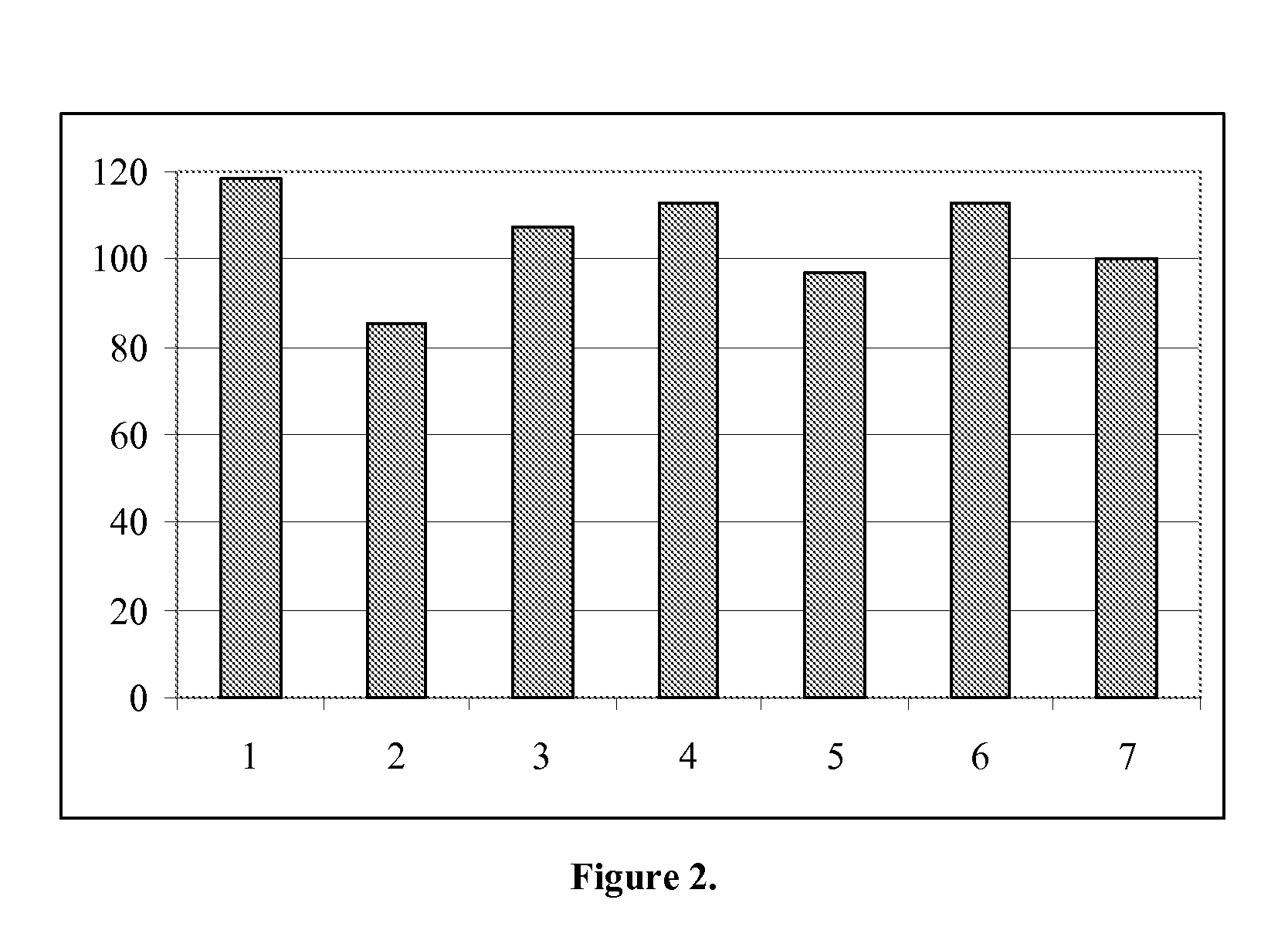Imaging contrast agents using nanoparticles
a technology of contrast agents and nanoparticles, applied in the field of nanoparticles, can solve the problems of low loading capacity, limited control of drug release kinetics, and colloidal instability, and achieve the effects of high biological compatibility, easy preparation, and high loading level of dyes
- Summary
- Abstract
- Description
- Claims
- Application Information
AI Technical Summary
Benefits of technology
Problems solved by technology
Method used
Image
Examples
example 1
Synthesis of Compound 17
[0170]
[0171]Compound B: Compound A (50 g, 0.31 mol) was dissolved in 300 mL of methylene chloride and triethylamine (34.5 g, 0.34 mol) was added to it. The solution was cooled in an ice-bath and 2-bromoisobutyryl bromide (71.3 g, 0.31 mol) in 150 mL of methylene chloride was added through an additional funnel. The reaction was slowly warmed up to room temperature and stirred at room temperature for 4 hours. The salt was filtered off and the reaction mixture was extracted with water and the organic phase was washed with saturated sodium bicarbonate solution and dried over magnesium sulfate. Solvent was evaporated and the crude product was purified by column chromatography using 80 / 20 heptane / diethyl ether as an eluent to give 65 g of pure product as a white solid, yield 92%. 1H NMR (CDCl3) δ (ppm): 1.45 (s, 9 H), 1.95 (s, 6 H), 3.42-3.48 (m, 2 H), 4.24 (t, J=5.25 Hz, 2 H).
[0172]Compound 17: Compound B (5.00 g, 0.016 mol) was added in portion to 15 mL of triflu...
example 2
Synthesis of Compound 18
[0173]
[0174]Compound D: compound C (10.0 g, 0.095 mol) was dissolved in 50 mL of methylene chloride and triethylamine (11.55 g, 0.114 mol) was added to it. The solution was cooled in an ice-bath and di-tert-butylcarbonate (22.83 g, 0.105 mol) in 30 mL of methylene chloride was added through an additional funnel. The reaction was slowly warmed up to room temperature and stirred at room temperature overnight. The reaction was extracted with water and the organic phase was washed with diluted HCl solution and dried over magnesium sulfate. Solvent was evaporated and the crude product was purified by column to give 12.43 g of pure product as an oil, 64% yield. 1H NMR (CDCl3) δ (ppm): 1.45 (s, 9 H), 3.30-3.35 (m, 2 H), 3.48-3.59 (m, 4 H), 3.71-3.76 (m, 2 H), 5.47 (s, br, 1 H).
[0175]Compound E: Compound D (12.43 g, 0.061 mol) was dissolved in 100 mL of methylene chloride and triethylamine (7.35 g, 0.073 mol) was added to it. The solution was cooled in an ice-bath an...
example 3
Synthesis of Compound 1
[0177]
[0178]Compound G: Compound F (5.0 g, 0.034 mol) was dissolved in 50 mL of methylene chloride and triethylamine (4.15 g, 0.041 mol) was added to it. The solution was cooled in an ice-bath and 2-bromoisobutyryl bromide (8.65 g, 0.038 mol) in 10 mL of methylene chloride was added through an additional funnel. The reaction was slowly warmed up to room temperature and stirred at room temperature overnight. The reaction was extracted with water and the organic phase was washed with diluted HCl solution and dried over magnesium sulfate. Solvent was evaporated and the crude product was purified by column chromatography using 90 / 10 hexane / ethyl acetate as an eluent to give 8.70 g pure product as an oil, 86% yield. 1H NMR (CDCl3) δ (ppm): 1.47 (s, 9 H), 1.92 (s, 6 H), 2.62 (t, J=6.28 Hz, 2 H), 4.42 (t, J=6.28 Hz, 2 H).
[0179]Compound 1: Compound G (4.5 g, 0.015 mol) was dissolved in 20 mL of methylene chloride and trifluoroacetiec acid (31.3 g, 0.27 mol) added unde...
PUM
| Property | Measurement | Unit |
|---|---|---|
| Temperature | aaaaa | aaaaa |
| Time | aaaaa | aaaaa |
| Particle size | aaaaa | aaaaa |
Abstract
Description
Claims
Application Information
 Login to View More
Login to View More - R&D
- Intellectual Property
- Life Sciences
- Materials
- Tech Scout
- Unparalleled Data Quality
- Higher Quality Content
- 60% Fewer Hallucinations
Browse by: Latest US Patents, China's latest patents, Technical Efficacy Thesaurus, Application Domain, Technology Topic, Popular Technical Reports.
© 2025 PatSnap. All rights reserved.Legal|Privacy policy|Modern Slavery Act Transparency Statement|Sitemap|About US| Contact US: help@patsnap.com



